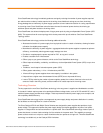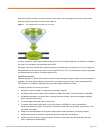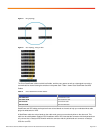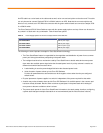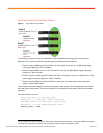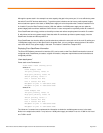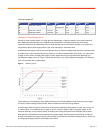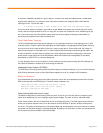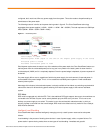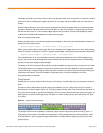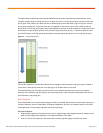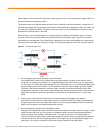
© 2012 Cisco and/or its affiliates. All rights reserved. This document is Cisco Public Information. Page 3 of 17
Note that all power available in the power stack is combined into one single large pool of power, and the stack
becomes a large single load to the power pool (Figure 2).
Figure 2. Cisco StackPower: One Power Pool, One Load
A surplus of power in a power stack enables features such as Zero-Footprint RPS and 1+N redundancy instead of
the classic 1:N redundancy with dedicated external RPS.
Redundancy with Cisco StackPower is better because the redundant power is already inline (1+N), as opposed to
being switched from one source to another, as in a classic RPS (1:N). The 1+N) redundancies are less susceptible
to problems because the power is already available inline.
StackPower operation
Switches deployed in a power stack discover each other and exchange messages to figure out how much power is
available in the stack (power budget), to set priorities (or use default priority values), and to start booting Cisco
IOS
®
Software on all switches, depending upon the power budget available in the stack.
The boot-up sequence of events is as follows:
1. Switches are interconnected in a ring topology and power is applied.
2. All switches power up their Stack Power infrastructure (50W each, 42W in initial IOS release 12.2(53)SE2).
3. All switches participate in the power stack, exchange discovery packets, information messages regarding
power resources and priorities.
4. The total budget in the power stack is discovered.
5. The power stack reserves 30W (42W in initial IOS release 12.2(53)SE2) in case a new member is
dynamically added to the stack. This amount is reserved once per stack, not per switch (unless there is only
one switch in the stack).
6. Budgets are distributed based on total power budget, power draw requirements, and switch priorities.
7. Switches that receive an allocation of power proceed to boot the Cisco IOS Software.
8. Switches that did not receive a power allocation will remain in the power stack without booting until more
power is added to the power budget.




